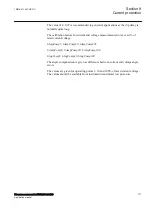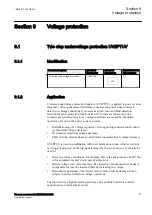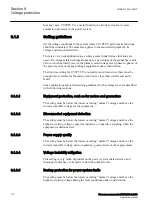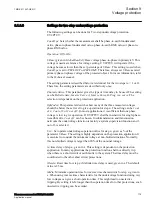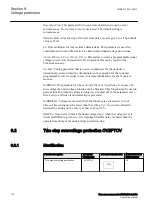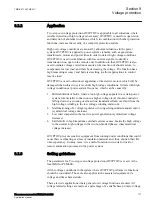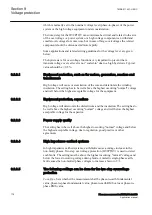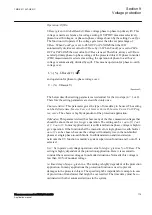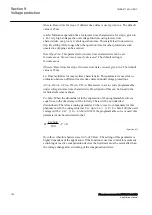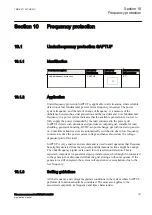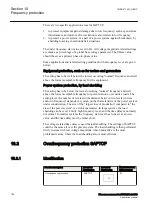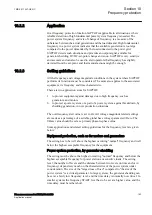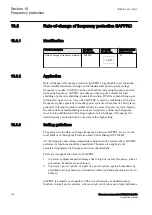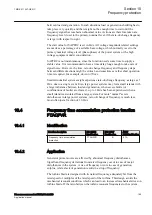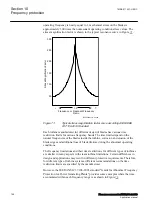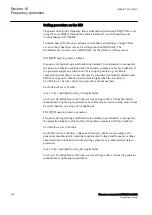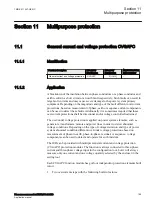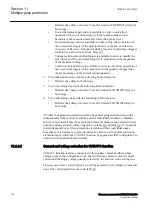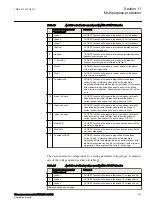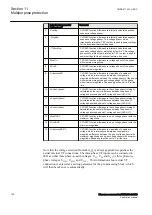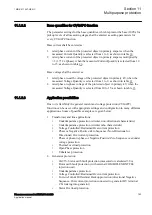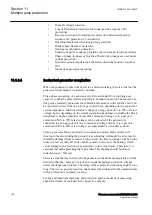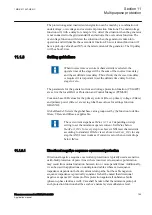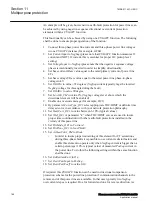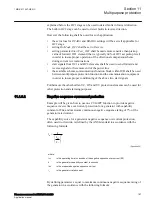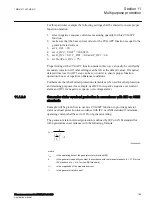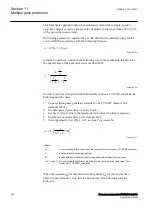
between load and generation. In such situations load or generation shedding has to
take place very quickly, and there might not be enough time to wait until the
frequency signal has reached an abnormal value. Actions are therefore taken at a
frequency level closer to the primary nominal level, if the rate-of-change frequency
is large (with respect to sign).
The start value for SAPFRC is set in Hz/s. All voltage magnitude related settings
are made as a percentage of a settable base voltage, which normally is set to the
primary nominal voltage level (phase-phase) of the power system or the high
voltage equipment under consideration.
SAPFRC is not instantaneous, since the function needs some time to supply a
stable value. It is recommended to have a time delay long enough to take care of
signal noise. However, the time, rate-of-change frequency and frequency steps
between different actions might be critical, and sometimes a rather short operation
time is required, for example, down to 70 ms.
Smaller industrial systems might experience rate-of-change frequency as large as 5
Hz/s, due to a single event. Even large power systems may form small islands with
a large imbalance between load and generation, when severe faults (or
combinations of faults) are cleared - up to 3 Hz/s has been experienced when a
small island was isolated from a large system. For more "normal" severe
disturbances in large power systems, rate-of-change of frequency is much less,
most often just a fraction of 1.0 Hz/s.
10.4
Frequency time accumulation protection function
FTAQFVR
GUID-124A1F91-44C0-4DB6-8603-CC8CA19AE2A6 v3
10.4.1
Identification
GUID-87605DA0-EAA6-4A6C-BF03-7FDB187E1B29 v2
Function description
IEC 61850
identification
IEC 60617
identification
ANSI/
IEEEidentification
Frequency time accumulation
protection
FTAQFVR
f<>
81A
10.4.2
Application
GUID-82CA8336-82BE-42AB-968A-D4F08941C9D0 v3
Generator prime movers are affected by abnormal frequency disturbances.
Significant frequency deviations from rated frequency occur in case of major
disturbances in the system. A rise of frequency occurs in case of generation
surplus, while a lack of generation results in a drop of frequency.
The turbine blade is designed with its natural frequency adequately far from the
rated speed or multiples of the rated speed of the turbine. This design avoids the
mechanical resonant condition, which can lead to an increased mechanical stress on
turbine blade. If the ratio between the turbine resonant frequencies to the system
1MRK 511 407-UEN C
Section 10
Frequency protection
Phasor measurement unit RES670 2.2 IEC
185
Application manual
Summary of Contents for Relion RES670
Page 1: ...RELION 670 SERIES Phasor measurement unit RES670 Version 2 2 IEC Application manual...
Page 2: ......
Page 46: ...40...
Page 52: ...46...
Page 92: ...86...
Page 112: ...106...
Page 178: ...172...
Page 216: ...210...
Page 232: ...226...
Page 286: ...280...
Page 328: ...322...
Page 340: ...334...
Page 380: ...374...
Page 381: ...375...

